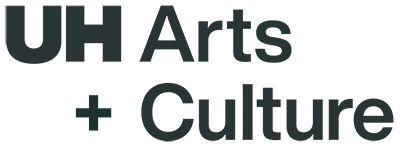Artists have long been interested in the field of philosophy; it has been subject to both fascination and scepticism. Artists are found quoting nuggets of philosophy as inspiration and as context for their work. For some, philosophers are names to conjure with, to add theoretical ballast to their perspectives, whereas for others philosophy is a vital of source of criticality, offering a new perspective on an individual's art and the context in which we find ourselves. For generations, artists have looked to philosophers of the Frankfurt School to understand the art-society-politics nexus and their role in it. Other artists, such as Joseph Kosuth, engage with the Analytic tradition: in Art After Philosophy (1969) Kosuth responds to AJ Ayer. Philosophy comprises one aspect of an art education at BA and MA levels, and for many, a Doctorate in Fine Art practice, requires a serious engagement with philosophy in addition to theory, history and other disciplines.
Can artists contribute meaningfully to philosophy? Can there be a productive relationship between art practice and philosophy that goes beyond name-checking the Good and the Great, or merely illustrating a well-honed philosophical phrase? What is it for an artist to love a philosophy? In this workshop, we want to explore the relationship of art to philosophy from the perspective of practising artists. Our aim is to examine how art can engage with, and contribute to the theoretical problems of philosophy, and offer a critical rethinking of philosophies re-imagined and interrogated through art practice. The symposium is open to both senior and early-career artists and scholars who are planning or conducting projects in philosophy and art.
Keynote:
Kerry Power (artist and lecturer)
Monash University, Melbourne, Australia
How can diffraction support art making process?
The application of diffraction in a theoretical context is supported by the physical phenomenon. The physical phenomenon occurs around us just as light, sound or water for example encounter matter. Picture a single light source illuminating an object and casting a shadow. The shadow fringe displays overlapping light waves that intensify at the edge. Similarly, waves of light can compete and cancel each other out, creating a diffractive pattern. This example can be used as a starting point to understand how diffraction can be used as a conceptual model and applied to knowledge formation (Barad, 2007).
In the keynote presentation, I work through Karen Barad’s (2007) theorisation of diffraction and interrogate my application as an art making tool. My use of diffraction in this context demonstrates a combustible sum of melting, active, sifting and overlapping applications to embrace difference as co-constitutive or intra-active (Barad, 2007). My artwork is projected throughout the presentation to support this process.
Kerry Power works in the faculty of education at Monash University, Australia. She has taught early years, primary and secondary pre-service teachers educational research and art education. She is a practising artist and researcher working primarily in the field of digital artmaking, educator virtual intra-action and new materialism.
Confirmed speakers:
Simeon Nelson
(University of Hertfordshire)
Yamu Wang
(University of the Arts, Zurich)
Sebastian Mühl
(Alpen-Adria-Universität Klagenfurt, Institute for Cultural Analysis
Mimi Cabell
(Rhode Island School of Design Division of Experimental & Foundation Studies)
Jaspal Birdi
(independent artist, Milan Italy)
Anna Walker
(University of Plymouth Transtechnology Research)
Kerry Purcell
(University of Hertfordshire & PhD candidate)
Shannon Forrester
(Royal College of Art)
Lisa Taliano
(independent artist, New York)
Alexandra Murray-Leslie
(Trondheim Academy of Fine Art, Norwegian University of Science and Technology)
Alison Pasquariello
(The Verbier Art Summit, Netherlands)
Maria Patricia Tinajero
(PhD candidate Institute for Doctoral Studies in Visual Art Philosophy Portland, Maine)
Dave Ball
(PhD candidate Winchester School of Art)
Stephen Sewell
(independent artist, New York)

